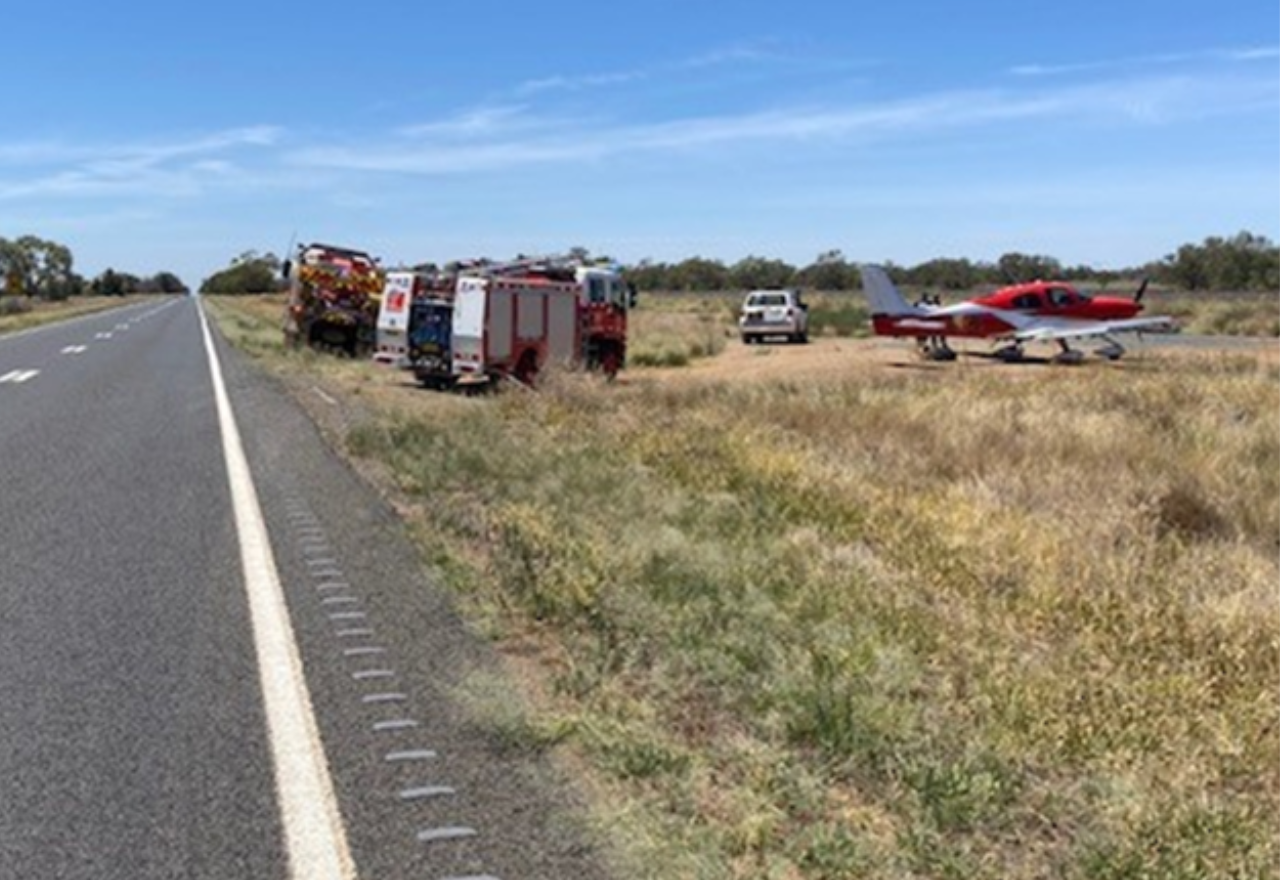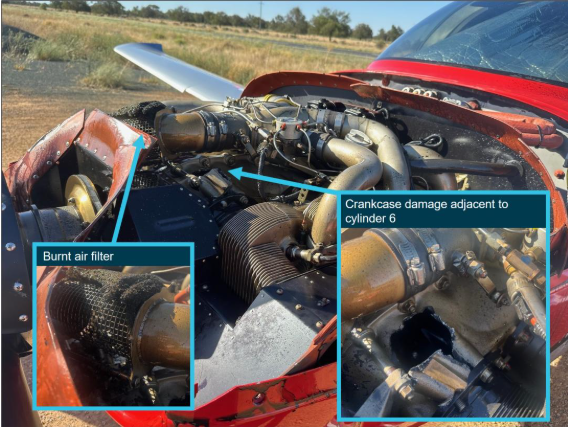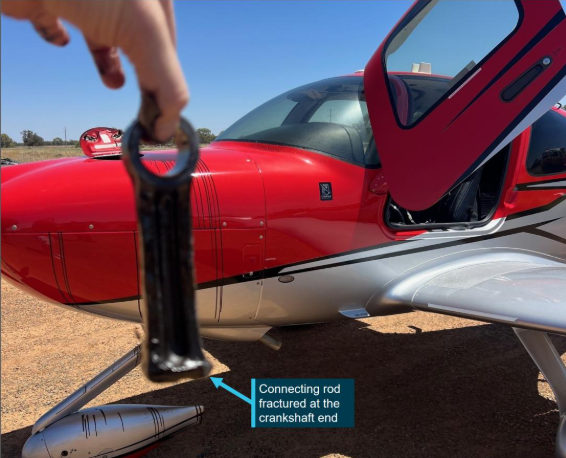Safety Board says engine failure caused emergency plane landing near Nyngan
Farren Hotham
16 August 2025, 2:40 AM
 The pilot safely landed on the Mitchell Highway. [IMAGE: Australian Transport Safety Board]
The pilot safely landed on the Mitchell Highway. [IMAGE: Australian Transport Safety Board]The forced landing of a light aircraft on the Mitchell Highway in January was the result of an engine failure and in-flight fire, according to a report by the Australian Transport Safety Bureau (ATSB).
Investigators say the clear-thinking of the well-prepared pilot averted what could have been a tragic outcome.
On 24 January 2025, a pilot and his passenger were flying from the Gold Coast to Mildura in their Cirrus SR22.
About three hours into the flight, while approximately 150 kilometres north-west of Dubbo and cruising at about 8,000 ft, the aircraft’s engine oil pressure decreased below normal operating limits.
In response the pilot began to divert for a landing at Nyngan.
But as they were making an 'assistance' radio call announcing their intentions, they heard the engine begin to ‘rev up’, followed by a ‘bang’.
The pilot then made a MAYDAY broadcast to Air Traffic Control (ATC), advising that the engine had experienced a mechanical failure and they would be making an emergency landing on the Mitchell Highway, east of Nyngan.
As ATC acknowledged the broadcast, the pilot observed flames ‘pouring’ from the top of the cowl.
The report notes the pilot elected not to deploy the aircraft’s ballistic recovery parachute due to concerns that the fire was fuel related, and that a parachute-assisted landing may result in injuries to the passenger, who was pregnant.

Engine damage identified by ATSB. IMAGE: taken by aircraft operator, labelled by ATSB
Instead, the pilot began an emergency descent, putting the aircraft into a ‘dive’ in an attempt to put out the fire.
The fire did self-extinguish but smoke began to enter the cockpit.
Despite the subsequent reduced visibility, the pilot proceeded to navigate the aircraft to land on the highway, while avoiding road traffic, for a successful forced landing with no injuries.
“The pilot’s timely and effective decision-making, likely supported by their experience on the aircraft type and knowledge of its performance capabilities, mitigated the risk of injury and further damage to the aircraft,” Australian Transport Safety Board. Director Transport Safety Dr Stuart Godley said.
Dr Godley noted in-flight engine failures in single-engine aircraft often result in the pilot experiencing high workload and time pressure, making preparedness critical.
“This incident demonstrates how the ‘aviate, navigate, communicate’ framework establishes a clear hierarchy of priorities, particularly during emergencies,” he continued.
“Acting in the appropriate order of priority improves situational awareness and supports coordinated responses in a dynamic environment.”
After the landing, the pilot inspected the engine and found the crankcase had ruptured adjacent to cylinder 6, below the induction duct assembly.
A connecting rod had separated from the crankshaft and the air filter was visibly damaged by fire.

IMAGE: ATSB
A disassembly and inspection of the engine had yet to be conducted at the time of publication of the ATSB’s investigation report.
As a result, the ATSB was unable to determine the root cause for the loss of oil pressure or the mechanical failure of the engine.
“Although engine failures are relatively rare, they do happen,” Dr Godley concluded.
“Given the potential severity of the consequences of an engine failure or power loss in a single‑engine aircraft, such occurrences therefore need to be planned for and managed appropriately.”



